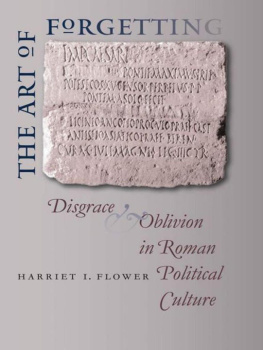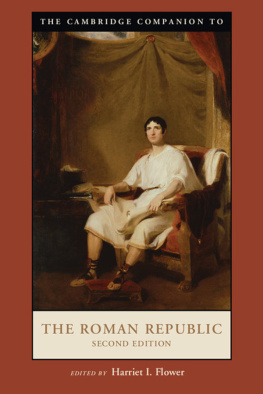Map and Illustrations
MAP
1 Neros Domus Aurea
ILLUSTRATIONS
1 Epitaph of L. Gellius Felix, Rome, second century A.D.
2 Peisistratus dedication of an altar to Apollo Pythios, Athens, c. 521 B.C.
3 Polyzelus dedication, base of bronze charioteer, Delphi, c. 478 B.C.
4 Inscription recording a treaty between Athens and Neapolis in Thrace, Athens, 409407 B.C.
5 Treaty of the Second Athenian Confederacy, Athens, 377 B.C.
6 Inscription of 271/70 B.C., with erasure of Antigonid tribe dating to 200 B.C., Athens
7 Decree honoring Phaidros, with erasures dating to 200 B.C., Athens
8 Honorary decree for Prytanis of Caristus, with erasures dating to 200 B.C., Athens
9 Sarcophagus and epitaph of L. Cornelius Scipio Barbatus, Tomb of the Scipios, Via Appia, Rome
10 Epitaph of P. Cornelius Scipio, flamen Dialis, Tomb of the Scipios, Via Appia, Rome
11 L. Aemilius Paullus monument at Delphi: inscription, c. 168 B.C.
12 L. Aemilius Paullus monument at Delphi: reliefs, c. 168 B.C.
13 Denarius of Faustus Sulla, 56 B.C., showing Jugurtha being handed over to Sulla by Bocchus
14 Base found at San Omobono in Rome, probably from Bocchus monument for Sulla as restored after Sullas return to Rome in 82 B.C.
15 Sullas equestrian statue near the rostra in the Forum, voted by the senate in 82 B.C., on an aureus of A. Manlius, 80 B.C.
16 Restoration of Antonys name in the Fasti Colotani, Rome
17 Decree of Julius Caesar about asylum rights of local temples with erasure of a letter of Mark Antony, 4 March 44 B.C., Sardis
18 Epitaph from the Tomb of L. Munatius Plancus, Tibur, after 22 B.C.
19 Vatican Obelisk, St. Peters Square, Rome, brought to Rome by Gaius (Caligula)
20 Inscriptions on the Vatican Obelisk. Earlier text of bronze letters put up by C. Cornelius Gallus as praefectus fabrum in 30 B.C. to mark the establishment of Forum Iulium
21 Inscriptions on the Vatican Obelisk. Later carved text dedicated to Divus Augustus and to the emperor Tiberius, dating to soon after the death of Augustus in A.D. 14
22 Senatus consultum de Cn. Pisone patre, copy A, Roman province of Baetica, Spain, A.D. 20
23 Inscription of Cn. Calpurnius Piso in the Forum at Leptis Magna, North Africa, A.D. 5/6?
24 Epitaph of Agrippina, wife of Germanicus, from the Mausoleum of Augustus, Rome, A.D. 37
25 Obverse and reverse of a sestertius of Gaius honoring his mother Agrippinas memory, A.D. 3741
26 Boundary marker from Tiber set up by the consuls C. Asinius Gallus and C. Marcius Censorinus, 8 B.C.
27 Fasti of some Vicomagistri, Rome, late 2 B.C.
28 Inscription recording the restoration by Augustus of the temple and precinct wall of Artemis, Ephesus, 5 B.C.
29 Portrait of Gaius (Caligula), marble (probably Luna) recovered from the Tiber River near the Milvian Bridge in Rome
30 Small portrait of Gaius (Caligula) on globe, bronze
31 Base honoring Drusilla as sister of Gaius, from the precinct of the temple of Hera, Samos
32 Lead weight found in the sea near Corsica, showing erasure of Gaius initial C
33 Arch with inscription of Gaius Caligula recarved for his successor Claudius, Thugga, North Africa
34 Sestertius celebrating the dedication of the temple of Divus Augustus in Rome by Gaius, A.D. 37
35 Inscriptions on the gate of Mazaeus, freedman of Augustus, and Mithridates, freedman of Agrippa, south entrance of the agora, Ephesus, 43 B.C.
36 Inscription from a statue base of the elder Julia as wife of Tiberius, next to statues of Tiberius and his brother Drusus, acropolis of Lindos, Rhodes, 62 B.C.
37 Epitaph of C. Iulius Gelos together with his father C. Iulius Thiasus (freedman of the elder Julia) and his mother Iulia (freedwoman of Livia, called Diva Iulia Augusta), Rhegium, Claudian
38 Inscription of L. Scribonius, freedman of Scribonia, first wife of Augustus and mother of his daughter Julia, Rhegium
39 Fasti Ostienses for October A.D. 31 recording the deaths of Sejanus and his children, as well as the suicide of his former wife
40 Leptis Magna: Old Forum and statue group honoring Germanicus and his brother Drusus in front of the temple of Augustus and Rome, A.D. 2331
41 Leptis Magna: reconstruction of the statues on the podium in front of the temple of Augustus and Rome, A.D. 2331
42 Inscription celebrating the accession of Tiberius as emperor, Messenia, A.D. 14
43 Ex-voto dedication by C. Julius Postumus, prefect of Egypt, of an object made of sixteen pounds of gold on behalf of the health and well-being of Claudius and his family, Forum of Augustus, Rome, A.D. 47/48
44 Inscription honoring Claudius, with his brother Germanicus, and his wife Messalina, city gate, Verona, A.D. 44/45










